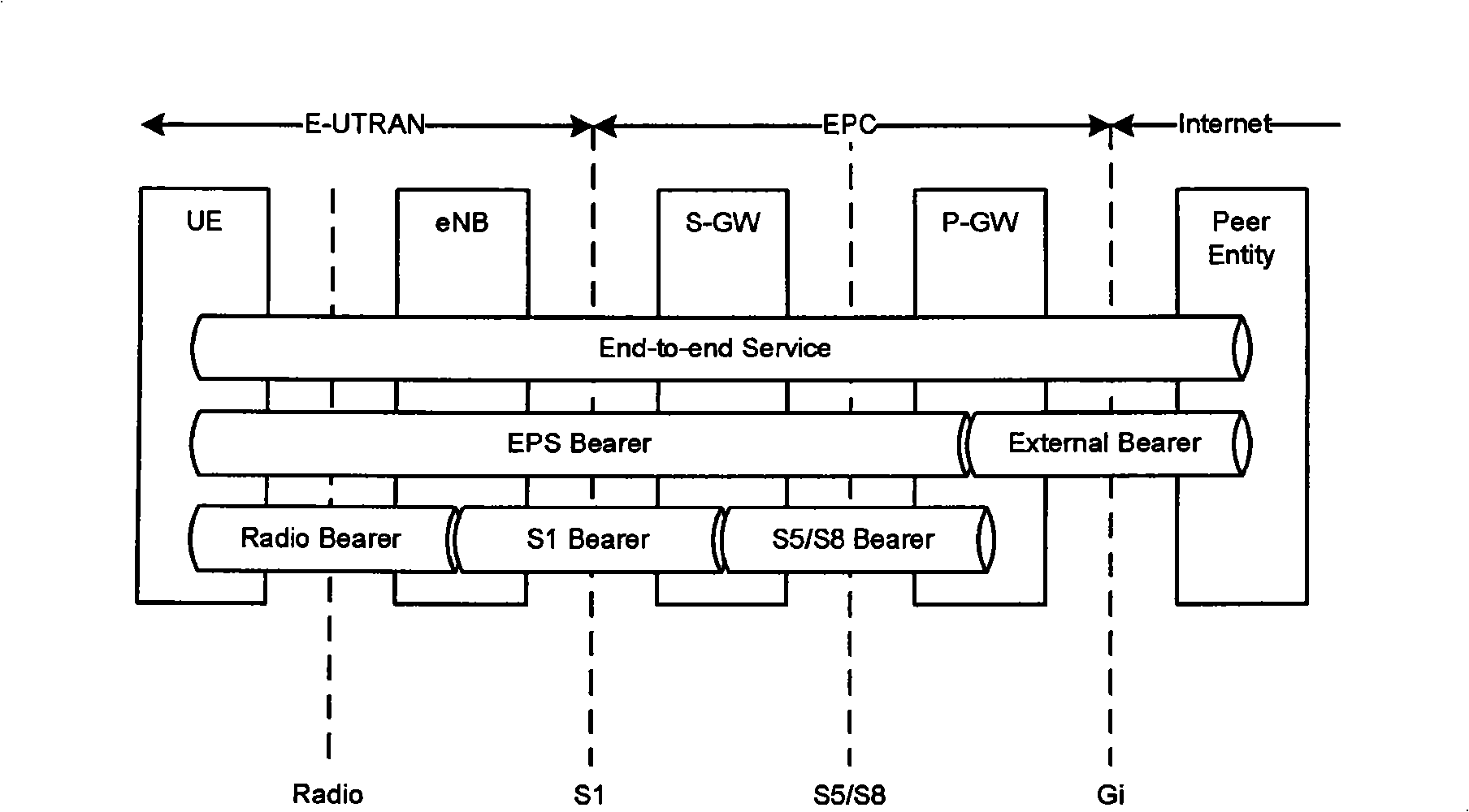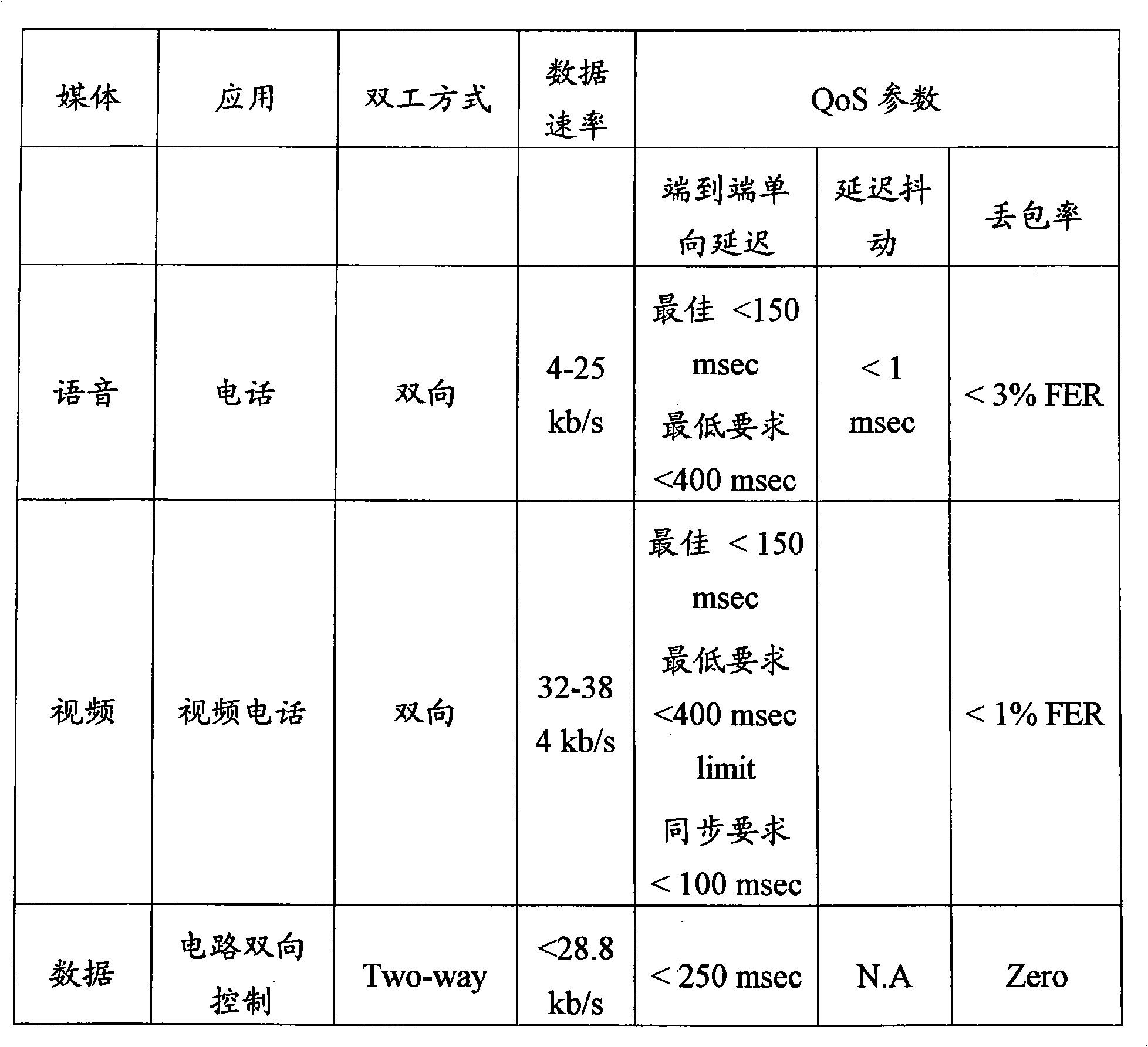Method for distributing network resource
A distribution method and business technology, applied in the direction of data exchange network, digital transmission system, electrical components, etc., can solve the problems such as the inability to carry out business, and achieve the effect of improving usability
- Summary
- Abstract
- Description
- Claims
- Application Information
AI Technical Summary
Problems solved by technology
Method used
Image
Examples
Embodiment Construction
[0018] The present invention segments the ARP subscription information and classifies services according to the delay parameters to establish a priority mapping grid, and queries the priority mapping grid according to the SAE service assignment information to obtain priority parameters and determine according to the priority parameters Allocation of network resources for services performed by users.
[0019] The service delay parameter is a QoS parameter that has the most obvious impact on the user's service experience. Different service types require different delay parameters. It is defined in the G.114 protocol of ITU-T (International Telecommunications Union-Telecommunications, International Telecommunication Union) The QoS parameters of the business are included, including the delay parameters of the business. The delay requirements of real-time services are listed in Attached Table 1, and the delay requirements of non-real-time services are listed in Attached Table 2.
...
PUM
 Login to View More
Login to View More Abstract
Description
Claims
Application Information
 Login to View More
Login to View More - R&D
- Intellectual Property
- Life Sciences
- Materials
- Tech Scout
- Unparalleled Data Quality
- Higher Quality Content
- 60% Fewer Hallucinations
Browse by: Latest US Patents, China's latest patents, Technical Efficacy Thesaurus, Application Domain, Technology Topic, Popular Technical Reports.
© 2025 PatSnap. All rights reserved.Legal|Privacy policy|Modern Slavery Act Transparency Statement|Sitemap|About US| Contact US: help@patsnap.com



